KCET 2023 Physics Question Paper A3 is available for download here. KCET 2023 Question Paper May 21 Shift 1 10:30 AM to 11:50 AM was conducted for Physics Paper. KCET 2023 Question Paper included 60 MCQ-based questions in total. Each candidate is awarded +1 for correct answers, however, there will be no negative marking for incorrect responses. Students got 80 minutes to attempt KCET 2023 Physics Question Paper.
KCET 2023 Physics Question Paper with Answer Key PDF A3
| KCET 2024 Physics Question Paper with Answer Key | Check Solutions |
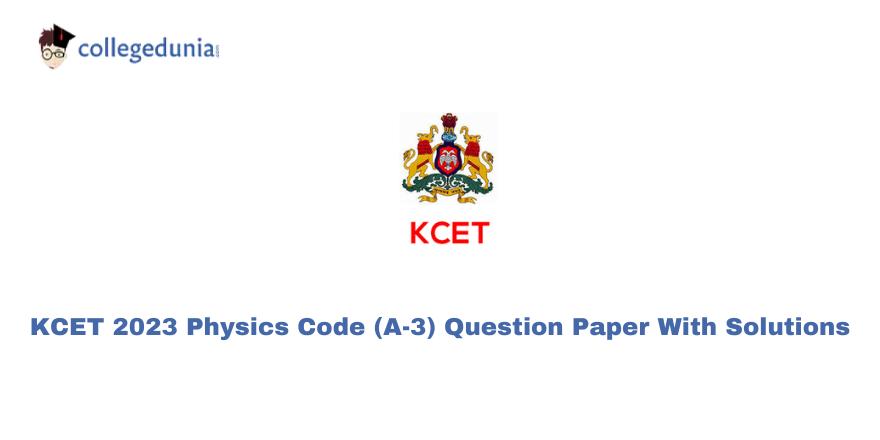
KCET 2023 Physics Questions with Solutions
When a p-n junction diode is in forward bias, which type of charge carriers flow in the connecting wire?
A full-wave rectifier with diodes D1 and D2 is used to rectify 50 Hz alternating voltage. The diode D1 conducts ....... times in one second.
The truth table for the given circuit is
The energy gap of an LED is 2.4 eV. When the LED is switched ‘ON’, the momentum of the emitted photons is
In the following equation representing \(\beta^-\) decay, the number of neutrons in the nucleus X is: \[ ^{210}_{83} Bi \rightarrow X + e^{-} + \overline{\nu} \]
A nucleus with mass number 220 initially at rest emits an alpha particle. If the Q value of the reaction is 5.5 MeV, calculate the value of the kinetic energy of the alpha particle.
A radioactive sample has a half-life of 3 years. The time required for the activity of the sample to reduce to \(\frac{1}{5}\) of its initial value is about:
A body of mass 10 kg is kept on a horizontal surface. The coefficient of kinetic friction between the body and the surface is 0.5. A horizontal force of 60 N is applied on the body. The resulting acceleration of the body is about:
A ball of mass 0.2 kg is thrown vertically down from a height of 10 m. It collides with the floor and loses 50% of its energy and then rises back to the same height. The value of its initial velocity is:
The moment of inertia of a rigid body about an axis:
Seven identical discs are arranged in a planar pattern, so as to touch each other as shown in the figure. Each disc has mass \(m\) radius \(r\). What is the moment of inertia of the system of six discs about an axis passing through the center of the central disc and normal to the plane of all discs?
A body of mass 10 kg is kept on a horizontal surface. The coefficient of kinetic friction between the body and the surface is 0.5. A horizontal force of 60 N is applied on the body. The resulting acceleration of the body is about:
A ball of mass 0.2 kg is thrown vertically down from a height of 10 m. It collides with the floor and loses 50% of its energy and then rises back to the same height. The value of its initial velocity is:
The moment of inertia of a rigid body about an axis:
100 g of ice at 0°C is mixed with 100 g of water at 100°C. The final temperature of the mixture is
[Take \( L_f = 3.36 \times 10^5 \, J/kg \) and \( S_w = 4.2 \times 10^3 \, J/kg^\circ C \)]
The P-V diagram of a Carnot's engine is shown in the graph below. The engine uses 1 mole of an ideal gas as working substance. From the graph, the area enclosed by the P-V diagram is (The heat supplied to the gas is 8000 J):
When a planet revolves around the Sun, in general, for the planet
A stretched wire of a material whose Young’s modulus \( Y = 2 \times 10^{11} \, Nm^{-2} \) has Poisson’s ratio \( \nu = 0.25 \). Its lateral strain is \( \epsilon_l = 10^{-3} \). The elastic energy density of the wire is:
A closed water tank has cross-sectional area \( A \). It has a small hole at a depth of \( h \) from the free surface of water. The radius of the hole is \( r \) so that \( r \ll \sqrt{\frac{A}{\pi}} \). If \( P_0 \) is the pressure inside the tank above the water level, and \( P_a \) is the atmospheric pressure, the rate of flow of the water coming out of the hole is \(\rho\) is the density of water:
A positively charged glass rod is brought near an uncharged metal sphere, which is mounted on an insulated stand. If the glass rod is removed, the net charge on the metal sphere is:
In the situation shown in the diagram, magnitude of \( q \ll Q \) and \( r \gg a \). The net force on the free charge \( -q \) and net torque on it about \( O \) at the instant shown are respectively:
\text{[\( p = 2aQ \) is the dipole moment]
Pressure of ideal gas at constant volume is proportional to:
A block of mass \( m \) is connected to a light spring of force constant \( k \). The system is placed inside a damping medium of damping constant \( b \). The instantaneous values of displacement, acceleration and energy of the block are \( x \), \( a \) and \( E \) respectively. The initial amplitude of oscillation is \( A \) and \( \omega' \) is the angular frequency of oscillations. The incorrect expression related to the damped oscillations is:
The speed of sound in an ideal gas at a given temperature \( T \) is \( v \). The rms speed of gas molecules at that temperature is \( v_{rms} \). The ratio of the velocities \( v \) and \( v_{rms} \) for helium and oxygen gases are \( X \) and \( X' \), respectively. Then \( \frac{X}{X'} \) is equal to:
A uniform electric field vector \( \vec{E} \) exists along the horizontal direction as shown. The electric potential at \( A \) is \( V_A \). A small point charge \( q \) is slowly taken from \( A \) to \( B \) along the curved path as shown. The potential energy of the charge when it is at point \( B \) is:
A parallel plate capacitor of capacitance \( C_1 \) with a dielectric slab in between its plates is connected to a battery. It has a potential difference \( V_1 \) across its plates. When the dielectric slab is removed, keeping the capacitor connected to the battery, the new capacitance is \( C_2 \), and the new potential difference is \( V_2 \). Then:
A cubical Gaussian surface has side of length \( a = 10 \, cm \). Electric field lines are parallel to the \( x \)-axis as shown. The magnitudes of electric fields through surfaces ABCD and EFGH are \( 6 \, kNC^{-1} \) and \( 9 \, kNC^{-1} \), respectively. Then the total charge enclosed by the cube is:
[Take \( \epsilon_0 = 9 \times 10^{-12} \, F m^{-1} \)]
Electric field at a distance \( r \) from an infinitely long uniformly charged straight conductor, having linear charge density \( \lambda \) is \( E_1 \). Another uniformly charged straight conductor having the same linear charge density \( \lambda \) is bent into a semicircle of radius \( r \). The electric field at its centre is \( E_2 \). Then:
Five capacitors each of value \( 1 \, \mu F \) are connected as shown in the figure. The equivalent capacitance between A and B is:
For a given electric current the drift velocity of conduction electrons in a copper wire is \( v_d \) and their mobility is \( \mu \). When the current is increased at constant temperature:
Ten identical cells each emf 2 V and internal resistance 1 \( \Omega \) are connected in series with two cells wrongly connected. A resistor of 10 \( \Omega \) is connected to the combination. What is the current through the resistor?
The equivalent resistance between the points A and B in the following circuit is:
A charged particle is subjected to acceleration in a cyclotron as shown. The charged particle undergoes an increase in its speed. The charged particle moves:
The resistance of a carbon resistor is 4.7 k\( \Omega \) \( \pm 5% \). The colour of the third band is:
The four bands of a colour coded resistor are of the colours gray, red, gold, and gold. The value of the resistance of the resistor is:
A wire of resistance \( R \) is connected across a cell of emf \( \epsilon \) and internal resistance \( r \). The current through the circuit is \( I \). In time \( t \), the work done by the battery to establish the current \( I \) is:
The Curie temperatures of Cobalt and iron are 1400 K and 1000 K respectively. At \( T = 1600 \, K \), the ratio of magnetic susceptibility of Cobalt to that of iron is:
The torque acting on a magnetic dipole placed in a uniform magnetic field is zero, when the angle between the dipole axis and the magnetic field is:
The horizontal component of Earth's magnetic field at a place is \( 3 \times 10^{-5} \, T \). If the dip at that place is \( 45^\circ \), the resultant magnetic field at that place is:
A proton and an alpha-particle moving with the same velocity enter a uniform magnetic field with their velocities perpendicular to the magnetic field. The ratio of radii of their circular paths is:
A moving coil galvanometer is converted into an ammeter of range 0 to 5 mA. The galvanometer resistance is 90 \( \Omega \) and the shunt resistance has a value of 10 \( \Omega \). If there are 50 divisions in the galvanometer-turned-ammmeter on either sides of zero, its current sensitivity is:
A positively charged particle of mass \( m \) is passed through a velocity selector. It moves horizontally rightward without deviation along the line \( y = \frac{2mv}{qB} \) with a speed \( v \). The electric field is vertically downwards and magnetic field is into the plane of the paper. Now, the electric field is switched off at \( t = 0 \). The angular momentum of the charged particle about origin \( O \) at \( t = 0 \) is:
In series LCR circuit at resonance, the phase difference between voltage and current is:
An ideal transformer has a turns ratio of 10. When the primary is connected to 220 V, 50 Hz ac source, the power output is:
The current in a coil changes from 2 A to 5 A in 0.3s. The magnitude of emf induced in the coil is 1.0 V. The value of self-inductance of the coil is:
A metallic rod of length 1 m held along east-west direction is allowed to fall down freely. Given horizontal component of earth’s magnetic field \( B_H = 3 \times 10^{-5} \, T \). The emf induced in the rod at an instant \( t = 2 \, s \) after it is released is:
A square loop of side 2 cm enters a magnetic field with a constant speed of 2 cm/s as shown. The front edge enters the field at \( t = 0 \). Which of the following graph correctly depicts the induced emf in the loop?
[Take clockwise direction positive]
For a given pair of transparent media, the critical angle for which colour is maximum?
An equiconvex lens made of glass of refractive index \( \frac{3}{2} \) has focal length \( f \) in air. It is completely immersed in water of refractive index \( \frac{4}{3} \). The percentage change in the focal length is:
A point object is moving at a constant speed of 1 m/s along the principal axis of a convex lens of focal length 10 cm. The speed of the image is also 1 m/s, when the object is at ...... cm from the optic centre of the lens.
When light propagates through a given homogeneous medium, the velocities of:
Total impedance of a series LCR circuit varies with angular frequency of the AC source connected to it as shown in the graph. The quality factor \( Q \) of the series LCR circuit is:
The ratio of the magnitudes of electric field to the magnetic field of an electromagnetic wave is of the order of:
For a point object, which of the following always produces a virtual image in air?
In an experiment to study photo-electric effect the observed variation of stopping potential with frequency of incident radiation is as shown in the figure. The slope and y-intercept are respectively:
In the Rutherford's alpha scattering experiment, as the impact parameter increases, the scattering angle of the alpha particle:
Three energy levels of hydrogen atom and the corresponding wavelength of the emitted radiation due to different electron transition are as shown. Then:
An unpolarised light of intensity \( I \) is passed through two polaroids kept one after the other with their planes parallel to each other. The intensity of light emerging from second polaroid is \( \frac{I}{4} \). The angle between the pass axes of the polaroids is:
In the Young's double slit experiment, the intensity of light passing through each of the two double slits is \( 2 \times 10^{-2} \, W/m^2 \). The screen-slit distance is very large in comparison with slit-slit distance. The fringe width is \( \beta \). The distance between the central maximum and a point \( P \) on the screen is \( x = \frac{\beta}{3} \). Then the total light intensity at that point is:
A 60 W source emits monochromatic light of wavelength 662.5 nm. The number of photons emitted per second is:
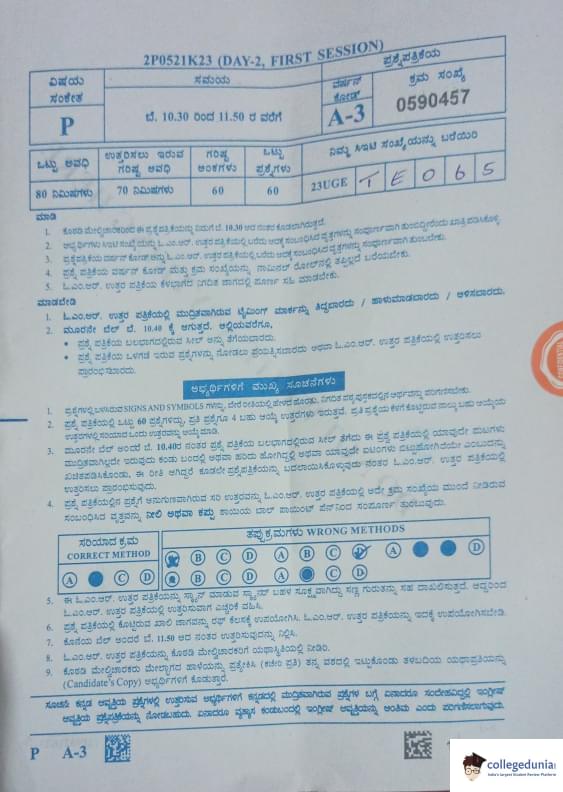
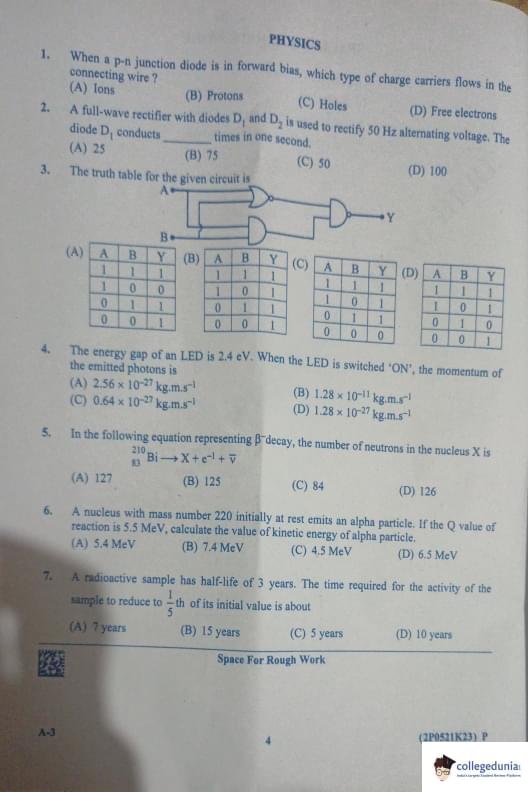
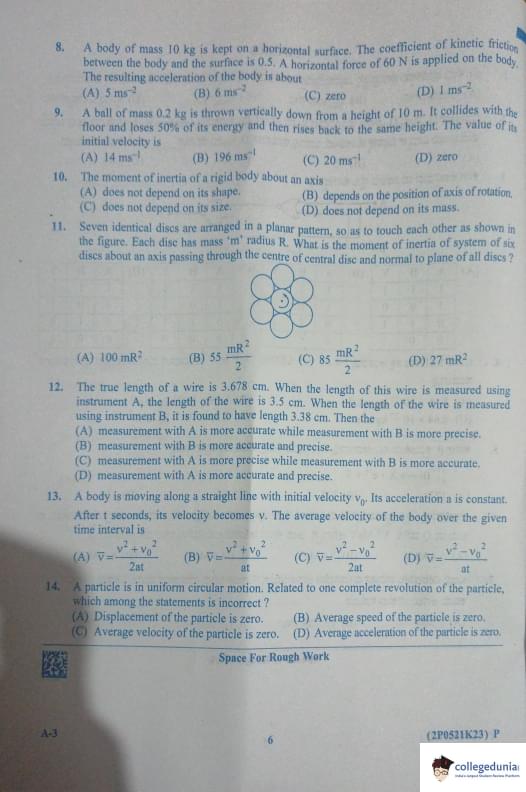
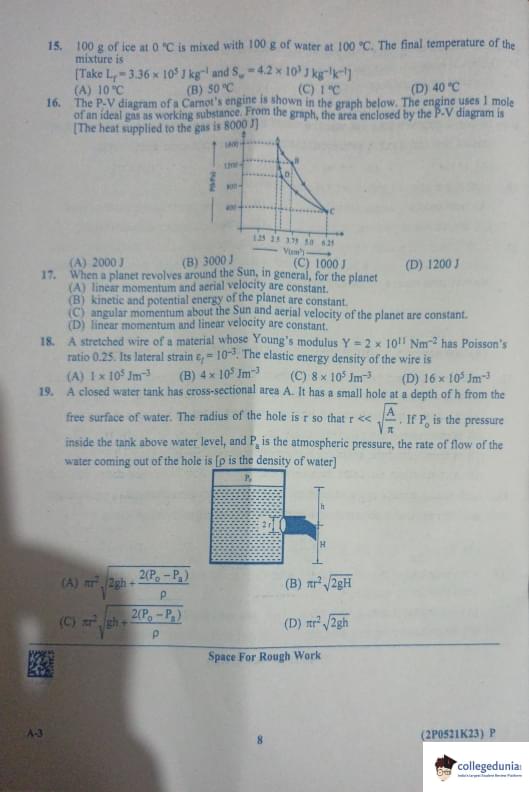
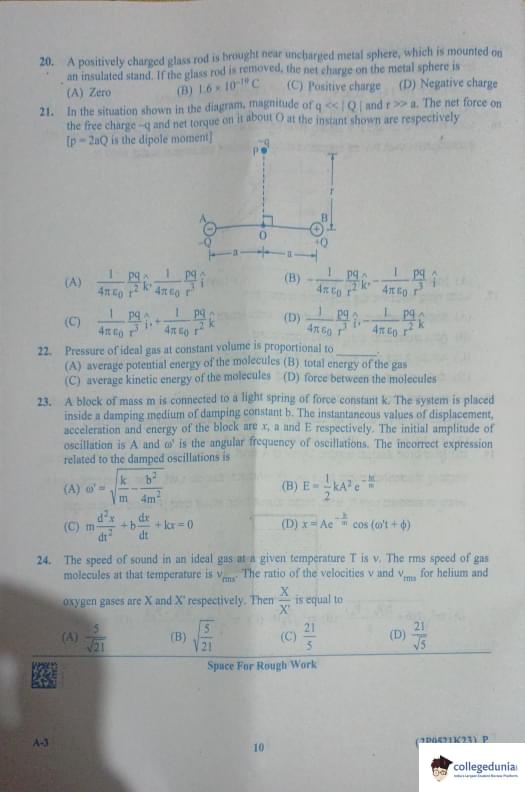
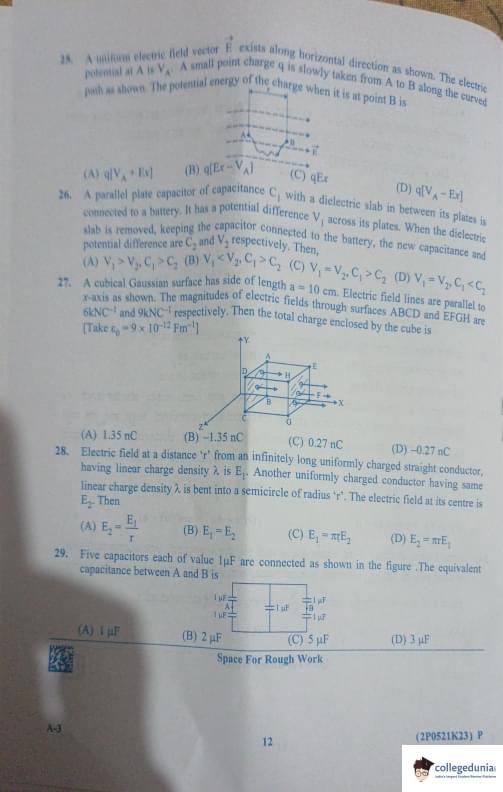
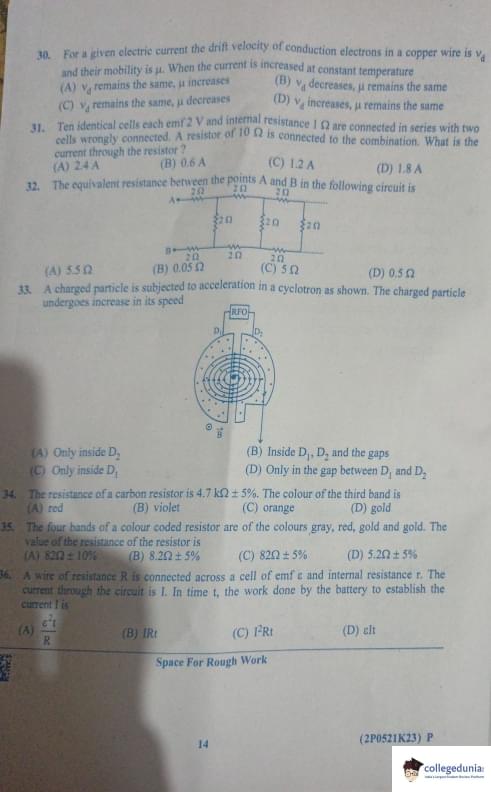
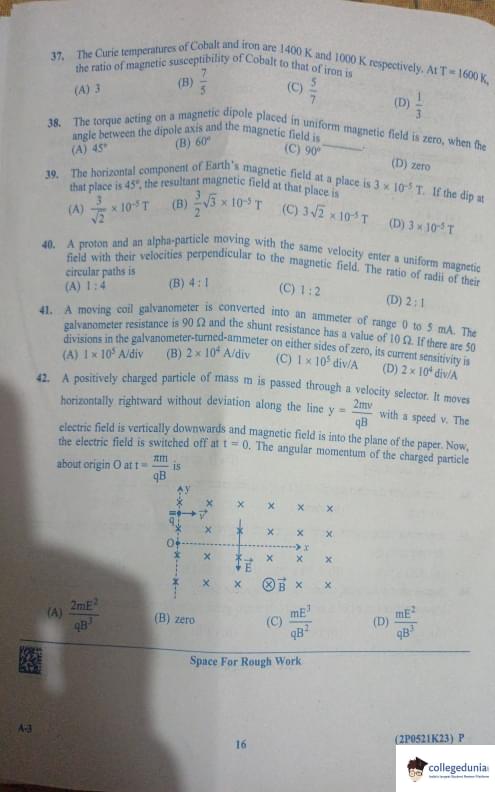
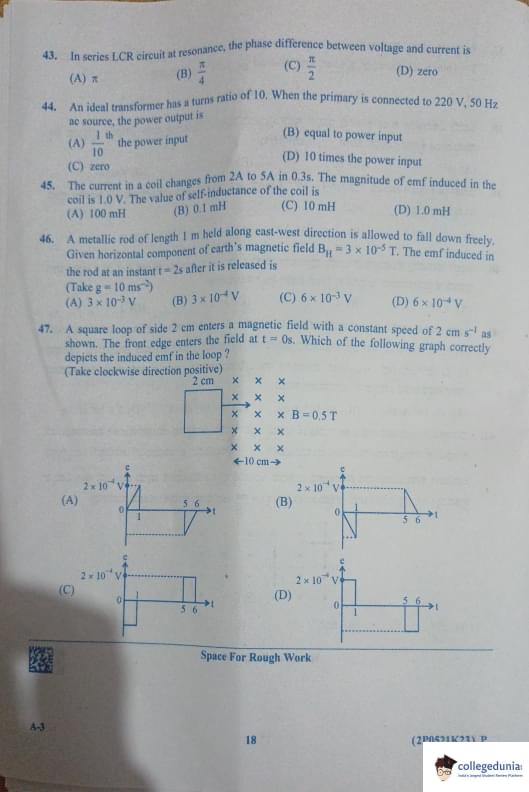
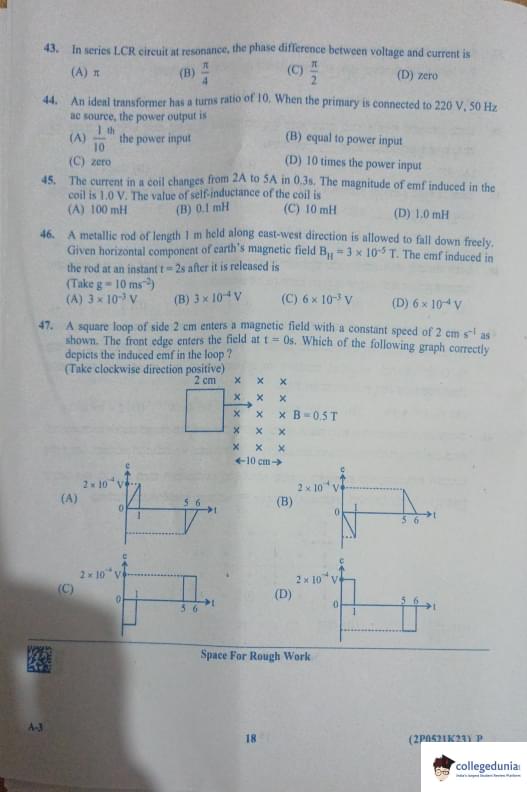
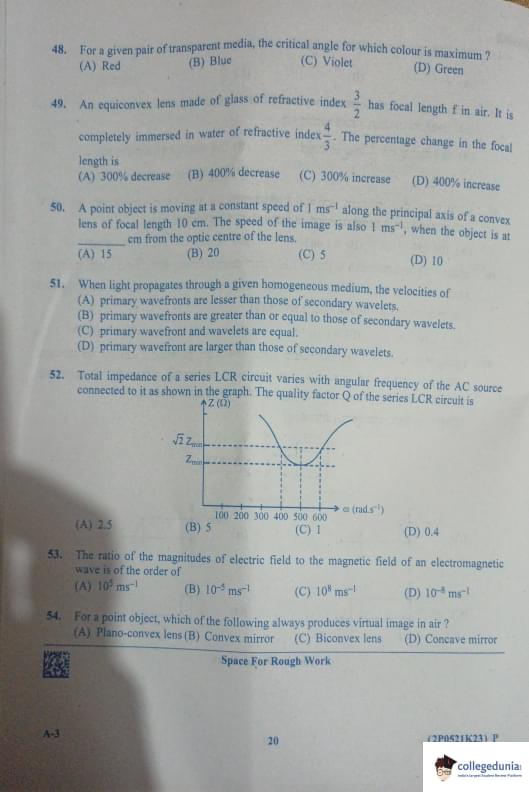
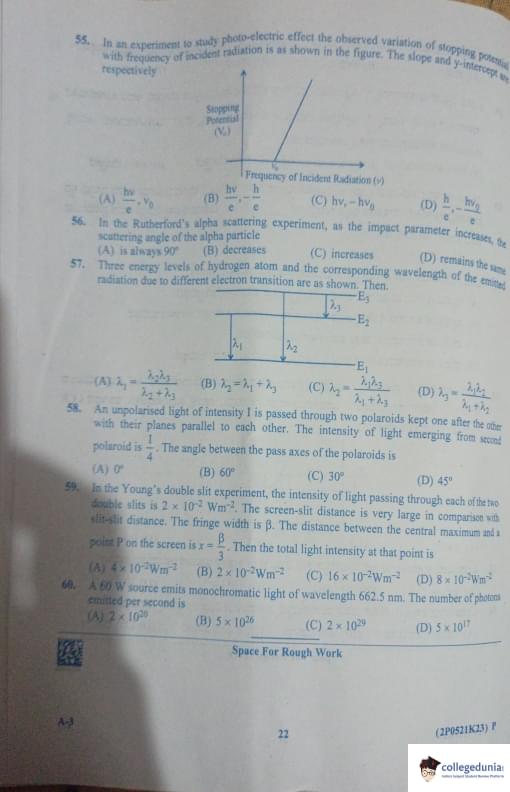
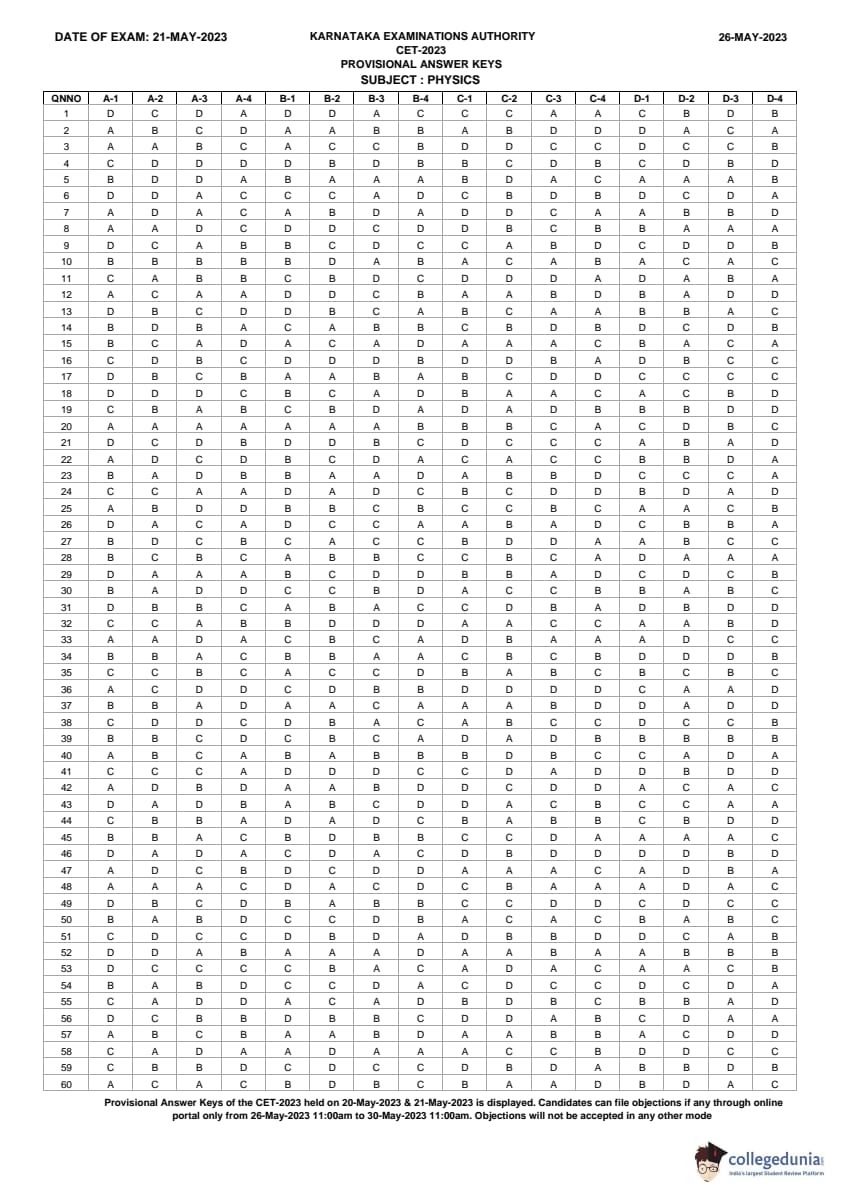
KCET 2023 Paper Analysis May 21
KCET 2023 paper analysis May 21 is available here. Candidates can check KCET 2023 paper analysis by clicking on the link provided below.
Also Check:
KCET Previous Year Question Paper
| KCET 2022 Question Paper | KCET 2021 Question Paper | KCET 2020 Question Paper |
| KCET 2019 Question Paper | KCET 2018 Question Paper | KCET 2017 Question Paper |



Comments